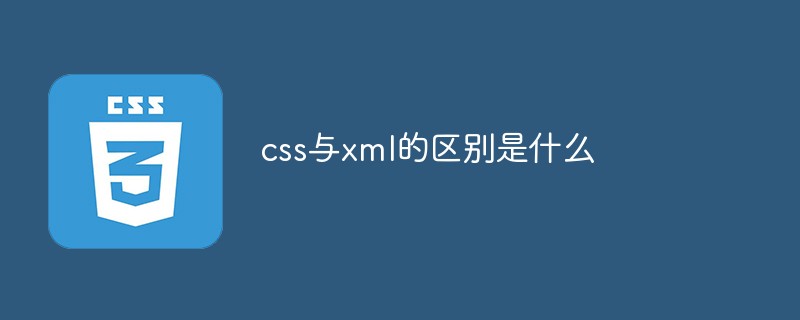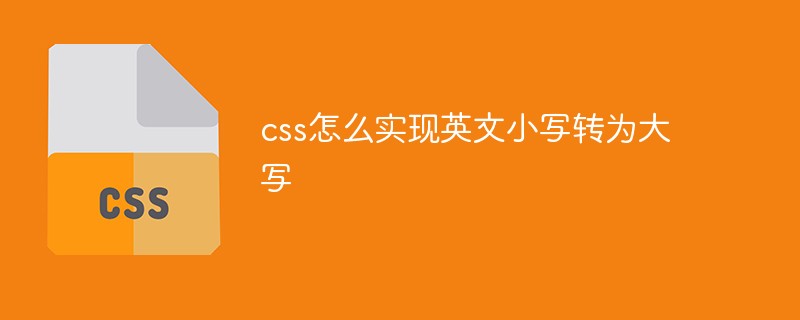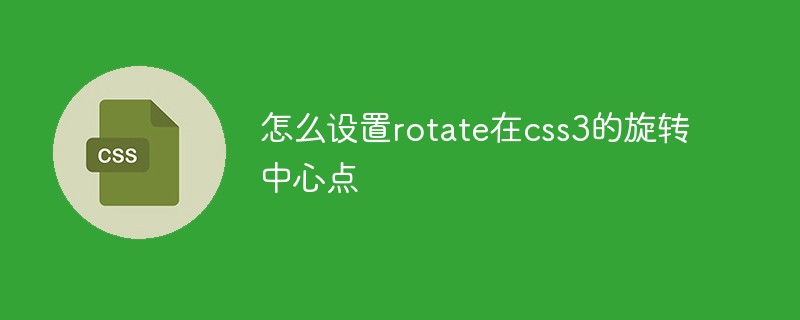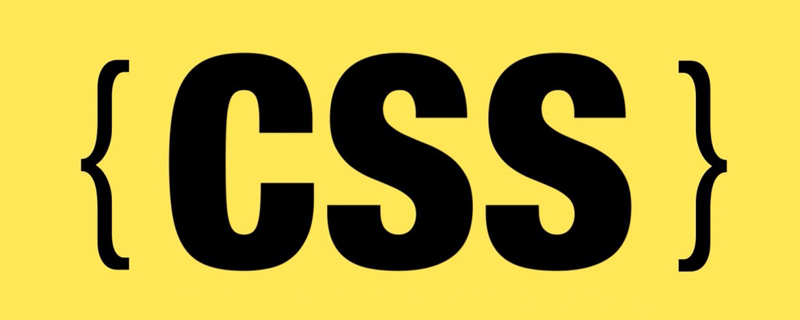 Web Front-end
Web Front-end CSS Tutorial
CSS Tutorial CSS hack is a general method to achieve CSS perfect compatibility with IE6/IE7/FF_Experience exchange
CSS hack is a general method to achieve CSS perfect compatibility with IE6/IE7/FF_Experience exchangeIt is a commonplace issue that CSS is compatible with various browsers. There are tutorials all over the Internet. The following content is not too novel and is purely a personal summary. I hope it will be of some help to beginners.
1. CSS HACK
The following two methods can solve almost all HACKs today.
1, !important
With IE7’s support for !important, the !important method is now only for IE6 HACK. (Pay attention to the writing. Remember that the declaration position needs to be in advance.)
2, IE6/IE77 for FireFox
* html and *html are IE-specific tags , firefox does not support it yet. And *html is a unique tag of IE7.
Note:
* html HACK for IE7 must ensure the following statement at the top of the HTML:
" http://www.w3.org/TR/html4/loose.dtd">
2. Universal float closure
For the principle of clear float, please refer to [How To Clear Floats Without Structural Markup]
Add the following code to Global CSS and add class="clearfix" to the div that needs to be closed. It works every time.
3. Other compatibility tips
1. After setting padding for div under FF, it will Causes width and height to increase, but IE will not. (can be solved with !important)
2, centering problem.
1). Vertically centered. Set line-height to the same height as the current div, and then use vertical- align: middle.(Be careful not to wrap the content.)
2). Horizontally centered. margin: 0 auto;(Of course it is not omnipotent)
3. If you need to add style to the content in the a tag, you need to set display: block; (common in navigation tags)
4. The difference in understanding of BOX between FF and IE leads to a 2px difference. There are also problems such as the margin of a div set to float doubling under IE.
5. The ul tag is under FF. By default there are list-style and padding.It is best to declare it in advance to avoid unnecessary trouble. (Common in navigation tags and content lists)
6. Do not set the height of the div as an external wrapper. It is best to add overflow: hidden. to achieve height adaptability. .
7, About the hand cursor. cursor: pointer. And hand is only applicable to IE.
1 CSS styles for firefox ie6 ie7
Now most of them use !important to hack, for The ie6 and firefox tests can display normally,
but ie7 can correctly interpret !important, which will cause the page not to be displayed as required! Find a hack
A good hack for IE7 is to use "* html". Now browse it with IE7 and there should be no problem.
Now write a CSS like this:
#1 { color: #333; } /* Moz */
* html #1 { color: #666; } /* IE6 */ * html #1 { color: #999; } /* IE7 */
Then the font color is displayed as #333 under firefox, #666 under IE6, and #999 under IE7.
2 Centering issues in css layout
The main style definitions are as follows:
body {TEXT-ALIGN: center;}
#center { MARGIN-RIGHT: auto; MARGIN -LEFT: auto; }
Explanation:
First define TEXT-ALIGN: center in the parent element; this means that the content in the parent element is centered; for IE, this setting is enough.
But it cannot be centered in mozilla. The solution is to add "MARGIN-RIGHT: auto;MARGIN-LEFT: auto; " when setting the child element.
It should be noted that if you want to use this method to center the entire page, it is not recommended. Set in a DIV, you can split multiple divs in sequence.
Just define MARGIN-RIGHT: auto;MARGIN-LEFT: auto; in each split div.
3 Different interpretations of the box model
#box{ width:600px; //for ie6.0- w\idth:500px; //for ff ie6.0}
#box { width:600px!important //for ff width:600px; //for ff ie6.0 width /**/:500px; //for ie6.0-}
4 Double generated by floating ie Distance
#box{ float:left; width:100px; margin:0 0 0 100px; //In this case, IE will generate a distance of 200px display:inline; //Ignore the float}
Let’s talk about the two elements block and inline in detail. The characteristics of the Block element are: it always starts on a new line, and the height, width, line height, and margins can all be controlled (block elements); the characteristics of the Inline element are: and Other elements are on the same line,... cannot be controlled (inline elements);
#box{ display:block; //Can simulate inline elements as block elements display:inline; //Achieve the same The effect of row arrangement diplay:table;
IE does not recognize the definition of min-, but in fact it treats normal width and height as if there is min.This will cause a big problem. If you only use width and height,
these two values will not change in a normal browser. If you only use min-width and min-height, it is equivalent to not setting the width and height under IE. high.
For example, if you want to set a background image, this width is more important. To solve this problem, you can do this:
#box{ width: 80px; height: 35px;}html>body #box{ width: auto; height: auto; min-width: 80px; min-height: 35px;}
6 Minimum width of the page
min-width is a very convenient CSS command. It can specify that the minimum width of the element cannot be smaller than a certain width, so that the layout can always be correct. But IE doesn't recognize this,
and it actually treats width as the minimum width. In order to make this command work on IE, you can put a
Then the CSS is designed like this:
#container{ min-width : 600px; width:expression(document.body.clientWidth The first min-width is normal; but the width in line 2 uses Javascript, which only Only IE can recognize it, which will also make your HTML document less formal. It actually implements the minimum width through Javascript judgment.
7 Clear floats
.hackbox{ display:table; //Display the object as a block element-level table} or .hackbox{ clear:both;}
Or add: after (Pseudo object), sets the content that occurs after the object, usually used in conjunction with content. IE does not support this pseudo object, and non-Ie browsers support it.
So it does not affect IE/WIN browsers. The most troublesome thing about this...#box:after{ content: "."; display: block; height: 0; clear: both; visibility: hidden;}
8 DIV floating IE The text generates a 3-pixel bug
The left object floats, and the right side is positioned using the left margin of the outer patch. The text within the right object will have a 3px spacing from the left.
#box{ float :left; width:800px;}#left{ float:left; width:50%;}#right{ width:50%;}*html #left{ margin-right:-3px; //This sentence is the key} HTML code
9 Attribute selector (this is not compatible, it is a bug in hiding css)
p[id]{}div[id]{}
This is for IE6.0 and Versions below IE6.0 are hidden, and the functions of FF and OPera
There are still differences between attribute selectors and sub-selectors. The scope of sub-selectors is narrowed in form, while the scope of attribute selectors is relatively large, such as p[ id], all p tags with ids are of the same style.
10 IE hide-and-seek problem
When the div application is complex, there are some links in each column, DIV At this time, it is easy for hide-and-seek problems to occur.
Some content cannot be displayed. When the mouse selects this area, it is found that the content is indeed on the page.
Solution: Use line-height attribute for #layout or use fixed height and width for #layout. Keep the page structure as simple as possible.
11 Height incompatibility
Height incompatibility means that when the height of the inner object changes, the height of the outer layer cannot be automatically adjusted, especially when the inner object uses
margin or paddign hour.
Example:
Content in p object
CSS: #box {background-color: #eee; }
#box p {margin-top: 20px; margin-bottom: 20px; text-align:center; }
Solution: Add 2 empty div object CSS codes above and below the P object :.1{height:0px;overflow:hidden;} or add the border attribute to the DIV.
 css ul标签怎么去掉圆点Apr 25, 2022 pm 05:55 PM
css ul标签怎么去掉圆点Apr 25, 2022 pm 05:55 PM在css中,可用list-style-type属性来去掉ul的圆点标记,语法为“ul{list-style-type:none}”;list-style-type属性可设置列表项标记的类型,当值为“none”可不定义标记,也可去除已有标记。
 css与xml的区别是什么Apr 24, 2022 am 11:21 AM
css与xml的区别是什么Apr 24, 2022 am 11:21 AM区别是:css是层叠样式表单,是将样式信息与网页内容分离的一种标记语言,主要用来设计网页的样式,还可以对网页各元素进行格式化;xml是可扩展标记语言,是一种数据存储语言,用于使用简单的标记描述数据,将文档分成许多部件并对这些部件加以标识。
 css3怎么实现鼠标隐藏效果Apr 27, 2022 pm 05:20 PM
css3怎么实现鼠标隐藏效果Apr 27, 2022 pm 05:20 PM在css中,可以利用cursor属性实现鼠标隐藏效果,该属性用于定义鼠标指针放在一个元素边界范围内时所用的光标形状,当属性值设置为none时,就可以实现鼠标隐藏效果,语法为“元素{cursor:none}”。
 rtl在css是什么意思Apr 24, 2022 am 11:07 AM
rtl在css是什么意思Apr 24, 2022 am 11:07 AM在css中,rtl是“right-to-left”的缩写,是从右往左的意思,指的是内联内容从右往左依次排布,是direction属性的一个属性值;该属性规定了文本的方向和书写方向,语法为“元素{direction:rtl}”。
 css怎么设置i不是斜体Apr 20, 2022 am 10:36 AM
css怎么设置i不是斜体Apr 20, 2022 am 10:36 AM在css中,可以利用“font-style”属性设置i元素不是斜体样式,该属性用于指定文本的字体样式,当属性值设置为“normal”时,会显示元素的标准字体样式,语法为“i元素{font-style:normal}”。
 css怎么实现英文小写转为大写Apr 25, 2022 pm 06:35 PM
css怎么实现英文小写转为大写Apr 25, 2022 pm 06:35 PM转换方法:1、给英文元素添加“text-transform: uppercase;”样式,可将所有的英文字母都变成大写;2、给英文元素添加“text-transform:capitalize;”样式,可将英文文本中每个单词的首字母变为大写。
 怎么设置rotate在css3的旋转中心点Apr 24, 2022 am 10:50 AM
怎么设置rotate在css3的旋转中心点Apr 24, 2022 am 10:50 AM在css3中,可以用“transform-origin”属性设置rotate的旋转中心点,该属性可更改转换元素的位置,第一个参数设置x轴的旋转位置,第二个参数设置y轴旋转位置,语法为“transform-origin:x轴位置 y轴位置”。


Hot AI Tools

Undresser.AI Undress
AI-powered app for creating realistic nude photos

AI Clothes Remover
Online AI tool for removing clothes from photos.

Undress AI Tool
Undress images for free

Clothoff.io
AI clothes remover

AI Hentai Generator
Generate AI Hentai for free.

Hot Article

Hot Tools

SublimeText3 Chinese version
Chinese version, very easy to use

MinGW - Minimalist GNU for Windows
This project is in the process of being migrated to osdn.net/projects/mingw, you can continue to follow us there. MinGW: A native Windows port of the GNU Compiler Collection (GCC), freely distributable import libraries and header files for building native Windows applications; includes extensions to the MSVC runtime to support C99 functionality. All MinGW software can run on 64-bit Windows platforms.

SAP NetWeaver Server Adapter for Eclipse
Integrate Eclipse with SAP NetWeaver application server.

Notepad++7.3.1
Easy-to-use and free code editor

mPDF
mPDF is a PHP library that can generate PDF files from UTF-8 encoded HTML. The original author, Ian Back, wrote mPDF to output PDF files "on the fly" from his website and handle different languages. It is slower than original scripts like HTML2FPDF and produces larger files when using Unicode fonts, but supports CSS styles etc. and has a lot of enhancements. Supports almost all languages, including RTL (Arabic and Hebrew) and CJK (Chinese, Japanese and Korean). Supports nested block-level elements (such as P, DIV),





